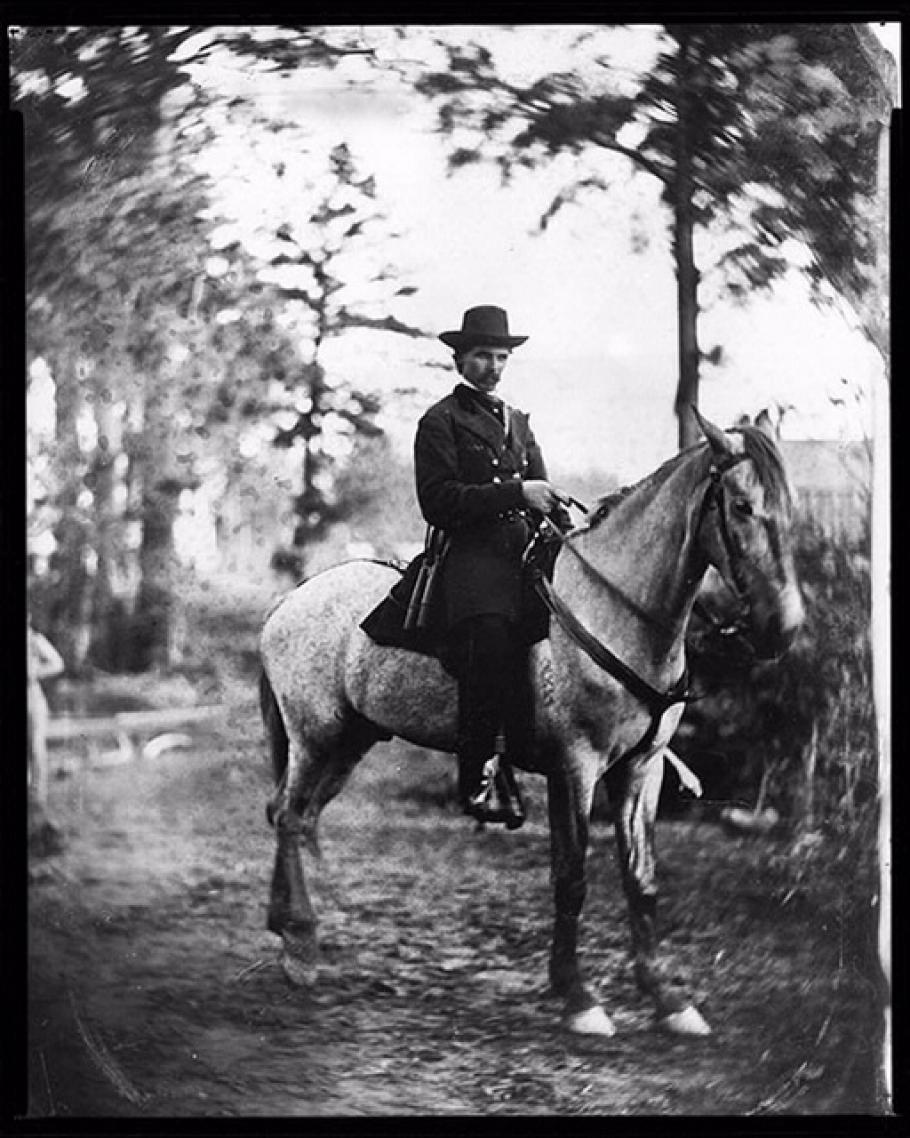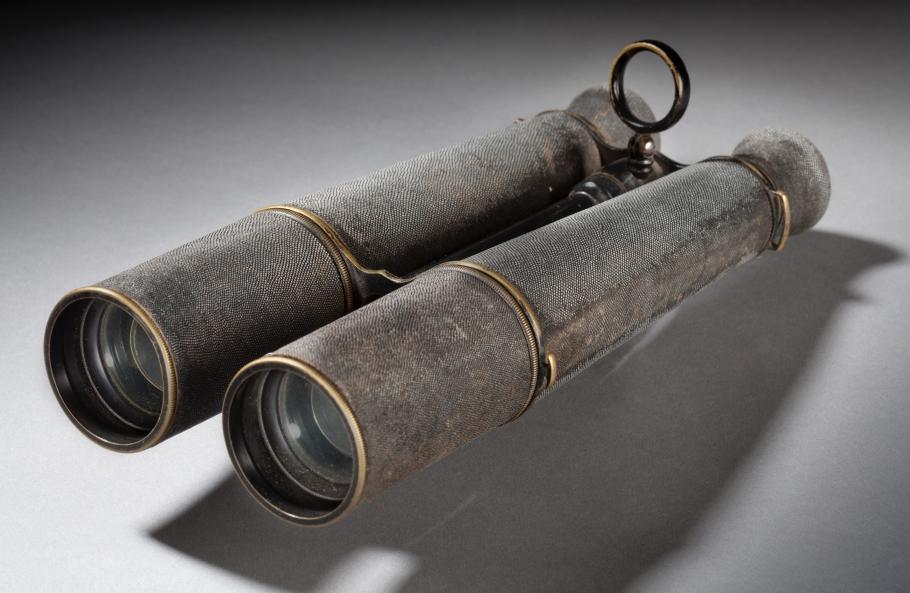The nation is in the process of commemorating the 150th anniversary of the Civil War and those of us at the Smithsonian are very much involved, searching our collections for items that will help our visitors better understand the conflict that divided 19th century America. As might be expected, the National Museum of American History, the National Portrait Gallery, and the National Museum of American Art preserve and display a wealth of objects, portraits, and images that help to bring the Civil War era to life. Who would have guessed, however, that the National Air and Space Museum would hold a single object used by more high ranking Union Army officers than any other surviving artifact in the entire Smithsonian collection! The object in question is a “double telescope,” or binoculars, owned by Thaddeus Sobieski Constantine Lowe, the founder and head of the Aeronautic Corps that provided aerial intelligence to Union commanders, 1861-1863. Donated to the Museum in 1931 by Lowe’s daughter, Mrs. Henry M. Brownback (Augustine Marguerite Lowe), the gift included several other objects used during the Civil War, including the large barometer that the aeronaut employed to determine his altitude, along with a handwritten note identifying the commanders who flew with Lowe, or otherwise observed the enemy through his field glasses, especially during the period of the Peninsula Campaign in the spring of 1862.
The list includes two commanders of the Army of the Potomac, George Brinton McClellan and Joseph E. Hooker; Corps Commander Samuel Heintzelman; Division Commanders Fitz John Porter, William F. “Baldy” Smith, John Sedgwick and Andrew A. Humphries; Brigade Commanders Charles Griffin, Hiram G. Berry, and John Reynolds; Battery Commander Emory Upton; Cavalry General George Stoneman and Chief Quartermaster of the Army of the Potomac Rufus Ingalls. Foreign military observers who viewed the battlefield through Lowe’s field glasses included two grandsons of the King of France — Prince Philippe d'Orléans, Count of Paris (claimant to the French throne); and Prince Robert Philippe Louis Eugène Ferdinand of Orléans, Duke of Chartres, both of whom saw active service with the Union Army. The list also includes Captain Frederick Beaumont, an officer of the Royal Engineers who returned to Great Britain and played a key role in establishing a balloon corps for the British Army. Not appearing on the list was a young Lieutenant who flew with the balloons and would soon earn fame and quick promotion – George Armstrong Custer. You can see the Lowe field glasses in a case in the Museum’s Looking at Earth Gallery. Other objects related to T.S.C. Lowe and Civil War ballooning can be found at our Steven F. Udvar-Hazy Center.

